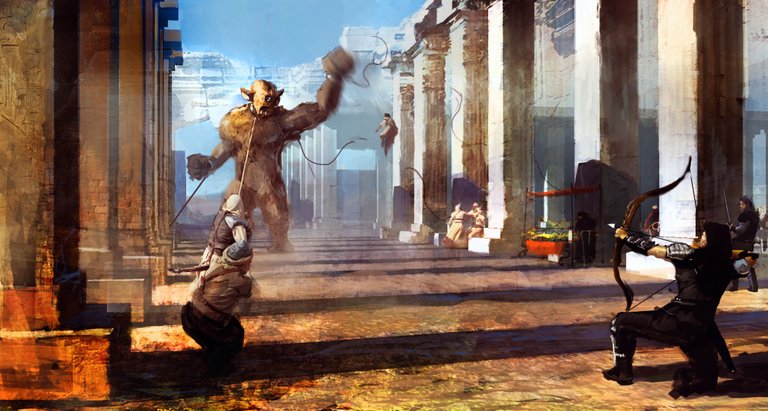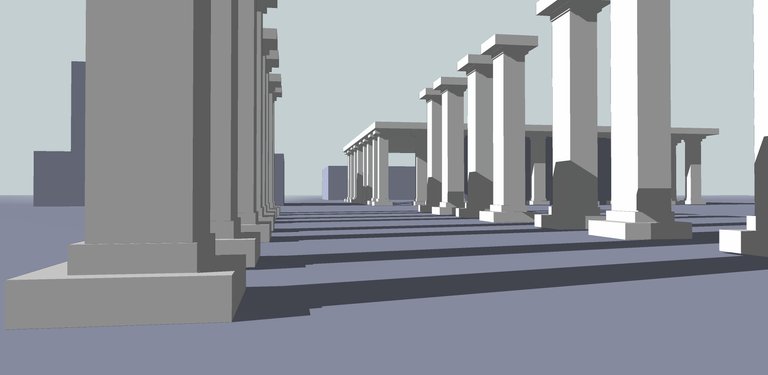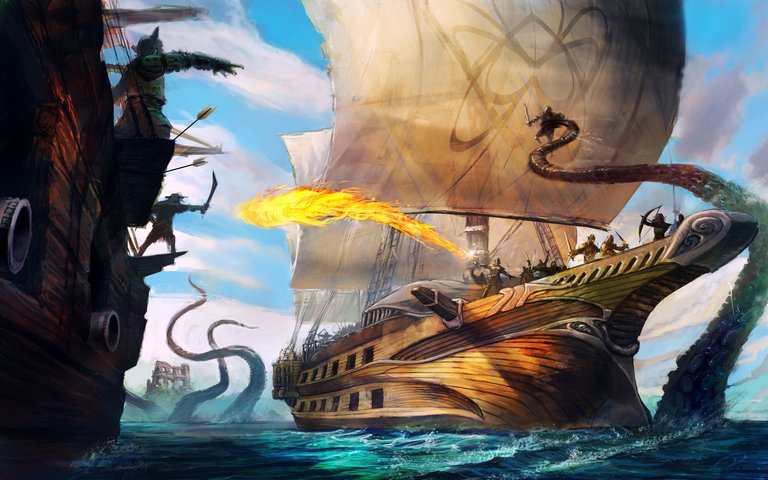Using Sketchup in my Illustrations
A lot of my art just comes from observation, or drawing from the head... but, as any other artist will tell you, there are many times where my work utilizes techniques such as photo reference, models that are then painted over, and 3D modeling that is then painted over in photoshop... When you're in art school, you're taught to view this way of working as "cheating", but then you realize that you paid your dues, you know your skills, and these techniques are tools to use.
Today, I'll talk about one of them. Sketchup. IT's a free 3D modeling program that was owned by Google, now by Trimble.
It's fairly easy to use, the learning curve isn't so steep, there's a ton of tutorial vids on youtube, and a 3D warehouse you can pilfer at will...
Image #1 - Creating your own objects (Temple Disturbance)

So this image came about by creating the city in Sketchup first. I was just messing around, seeing what forms I could get and learning the program. All that was in my head was "Ancient street scene with a temple" I did a simple city layout, used some of the camera and lighting tools, and exported an image. Then I used my paint skills in Photoshop to create the image you see above.

(The picture I exported from Sketchup)
Image #2 - Importing objects from the warehouse (Dead Seas)

So, for this one I had completed thumbnails, sketches, and knew before-hand what I wanted from the image: a fantasy scene set on the ocean with orcs vs. elves on ships- and a kraken like creature under them...
I knew making the ships would be a pain, so I utilized the ability to import models from the warehouse and set up a scene to export. As before, I then painted over the original (using it mainly as just a guide for where the different elements of the ships should be)

I find using Sketchup to be a timesaving tool that effectively gives you results you would otherwise painstakingly have to do in your initial stages. You get a boost to your production and it solves a lot of perspective issues. (That being said, you still have to know perspective, your camera angle, etc. to make it "work")
Well, that's it for this post.
As always , thanks for the upvotes,resteems, and follows.
This community of artists and creatives is a blast to be around!!! :)
Take care!
Damn! Nice! Thanks for the tip
No problem! :)
This is some great stuff! I like how you can't really see the tech used in the finished product :)
That's the point, really. It's just there as an underpainting of sorts. A base to work from. (And I keep it a separate layer in Photoshop)
It really helps to give depth of field to the illustrations
Thanks, I agree! :)
those are sweet
Thanks a lot! :)